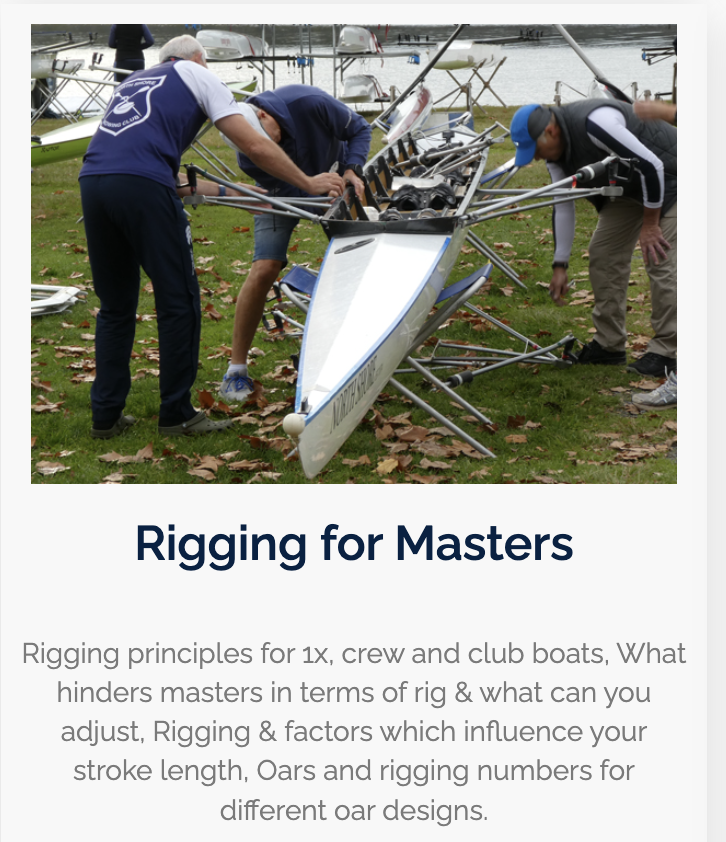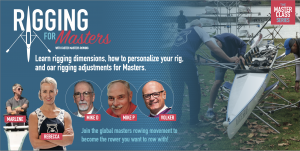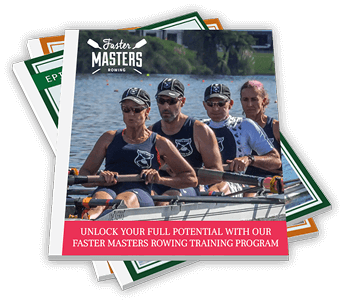Several listeners asked questions about oars and rigging for masters - specifically how long your sculling oars should be and what the ratio of outboard to inboard is ideal and whether that changes for different oar shapes,
We apologise for the poor audio in part of this podcast.
Timestamps:
01:00 This Past Week - what we do to advocate for masters rowing.
Rowing Canada ethics course - legal issues, ethical issue and scenarios
11:00 How to rig a single scull for my height
Rules for rigging rowing boats
- Make yourself comfortable
- Centre yourself - at the catch hip on the pin centreline
- Height - keep your forearms above the handles
Sit in your boat and get someone to observe - if they aren't an experienced rower, just get them to take photos of you - from as low down as possible so you can examine in close up.
20:00 What sculling rig is best?
Sadly "it depends" is the only correct answer here. It's more important to see the person in the boat than to just follow rigging numbers. Customise to your flexibility and strength.
Sculling oar lengths for masters depend on your age and the type of oar you are using - see diagram below.
Rig for the "end of the race" - Ted van Dusen
22:00 Sculling oar length for masters
What degrees of arc should we rig for?
Your priority is to get as many degrees of arc catch angle as you can.
In a September 2021 Rowing News magazine article Volker Nolte makes recommendations for masters "Rigging Numbers for Scullers"
The diagram below is from the article.

Learn Rigging for Masters with Volker Nolte, Mike Purcer and Mike Davenport in our exclusive Webinar - available on demand.
28:00 Hanging or arm bending in the initial part of the stroke?
Use each body part once per stroke - does arm bending affect your finish?
35:00 The Power Rectangle in rowing diagram. When oars are perpendicular what is the pattern of legs, back & arms - using the right sequence. Check using video.
37:00 Foot stretcher angle and height - rule of thumb 43-45 degrees on the foot stretcher. Shoe height is determined by your flexibility and height.
Ensure your shoes fit. Check heel to seat measurement on the erg.
44.00 Getting back on the water after a long break - using pontoons. Be gradual.
Try "no puddle" rowing and turns or backing down with some stationary drills to reacquaint yourself with the boat and oar handling skills.

47:00 Getting to the pin in club boats - should you compromise finish or catch?
Use the release position if you can't adjust them.
Buy your own oars if you can afford and use clams to adjust then to suit the boat you are in.
Ask your club committee or board to standardize boat set up.
51:00 Changing oar gearing is it OK to shorten or lengthen the inboard?
Are you trying to match other people in the crew? How does it affect your rating and load?
54:00 C2 Fatties (sculls) can you cut them down to 85cm?
57:00 Using the C2 Comp blade for lightweight women masters
1:02:00 Transferring sculling skills to a sweep boat
Consider rotation, inside arm and faster moving boats.


